What Is Freediving?
Freediving is one of the oldest forms of diving which has gained significant popularity as a sport in recent decades. You may have come across the term “freediving” in movies, books, or news, or heard about it from a friend who returned from a vacation with impressive photos and videos of their underwater adventures. While some may associate freediving with images of extreme depths and superhuman feats, the definition of freediving is simply being underwater while holding your breath, so every time you hold your breath and explore the underwater world, you’re essentially a freediver.
Freediving is an aquatic activity that involves diving underwater and holding one’s breath without the aid of any breathing equipment like scuba tanks. There’s no one way how to practice freediving. For some, freediving is a way of life, while others see it as a competitive sport, and many see it as a hobby.

In this article, we’ll explain how freediving works, explore the types of freediving and its advantages, learn where it can be done, and the reasons why people are drawn to this amazing experience.
Freediving has been around for centuries and has a rich history that can be traced back to ancient times. Various cultures around the world have practiced breath-hold diving without the use of scuba gear for hunting, fishing, and resource gathering from the sea.
When it comes to freediving nowadays, there are three main categories in which the sport can be classified: recreational, applied, and competitive.
Recreational Freediving
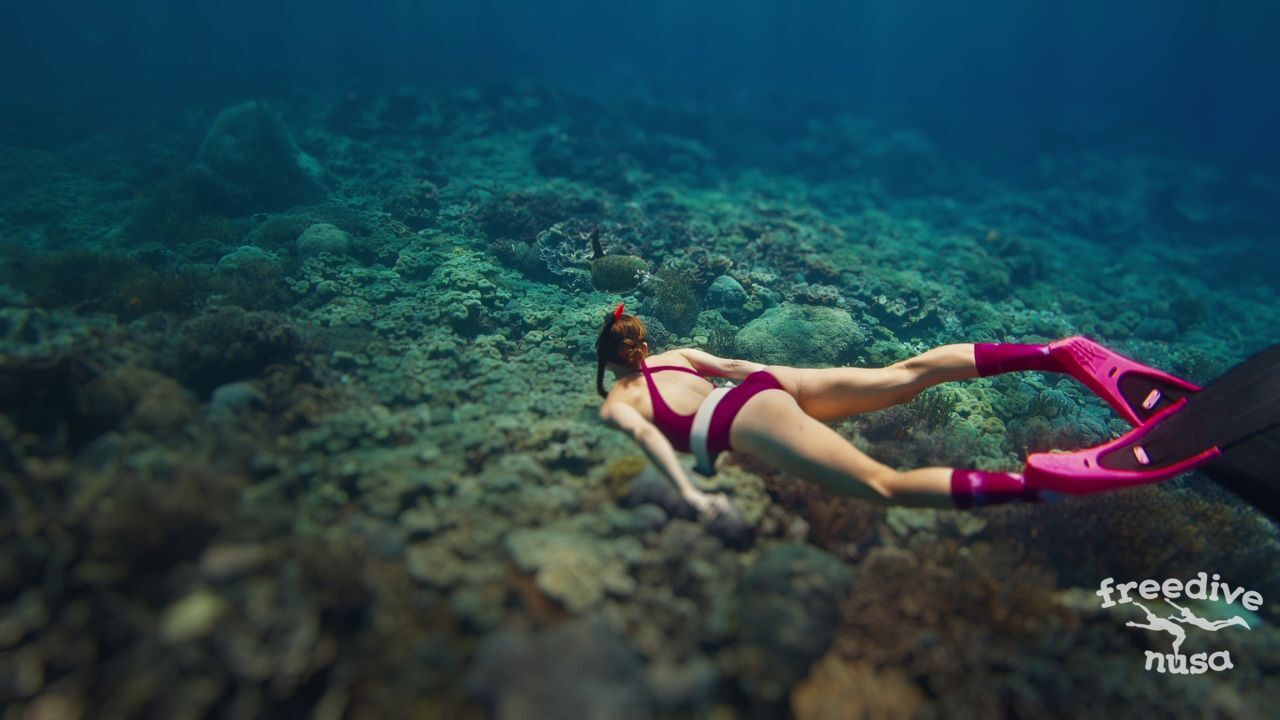
Recreational freediving is when people do freediving for fun, like on vacation or training with a certified partner. People can do it for many reasons, like challenging themselves, taking beautiful underwater pictures, feeling better mentally, exploring underwater, enhancing their fitness level, making new friends, and being a part of a community of like-minded people. A lot of people say they love how calm and peaceful they feel while diving and find this experience very meditative. Freediving makes them feel more connected to their surroundings.
Applied Freediving
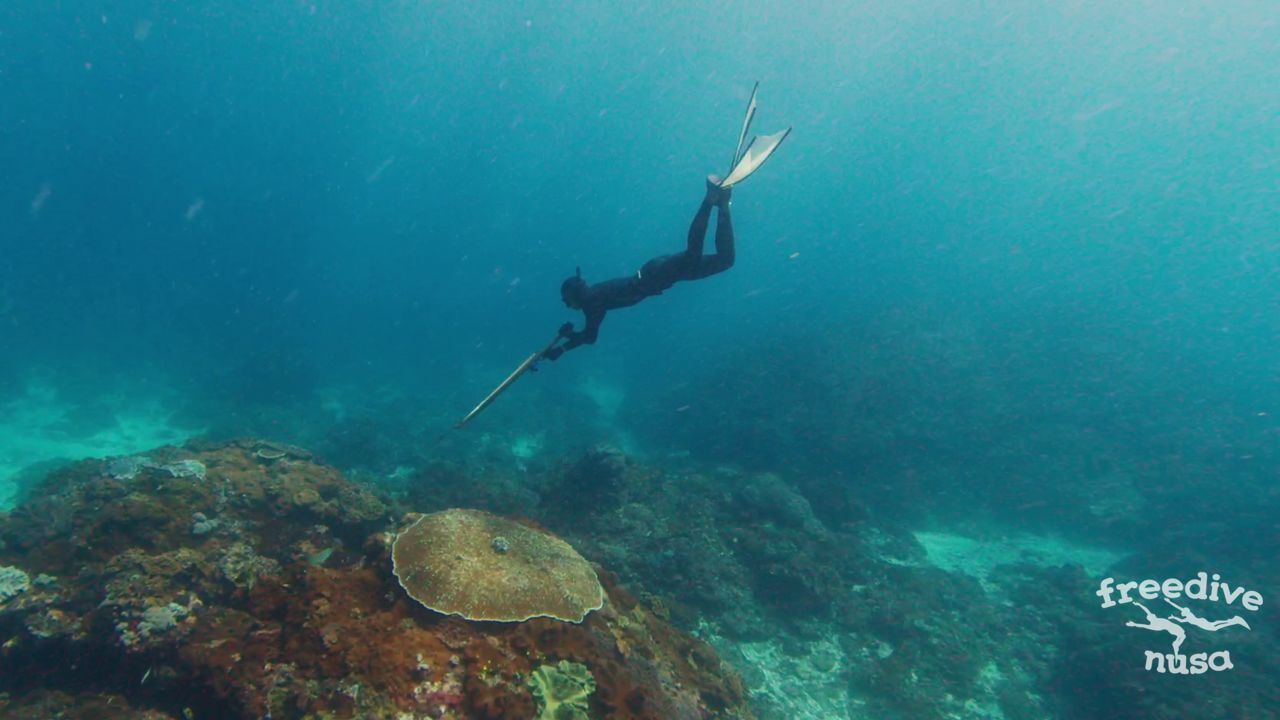
Applied freediving involves using freediving techniques and principles for a specific purpose, such as spearfishing, underwater photography or videography, scientific research, or marine conservation efforts. For some individuals, such as the “Ama” divers in Japan who collect pearls and seafood, or the Bajau tribes in Indonesia, Malaysia, and the Philippines who live at sea and spearfish, freediving is an integral part of their daily lives and way of existence.
Competitive Freediving
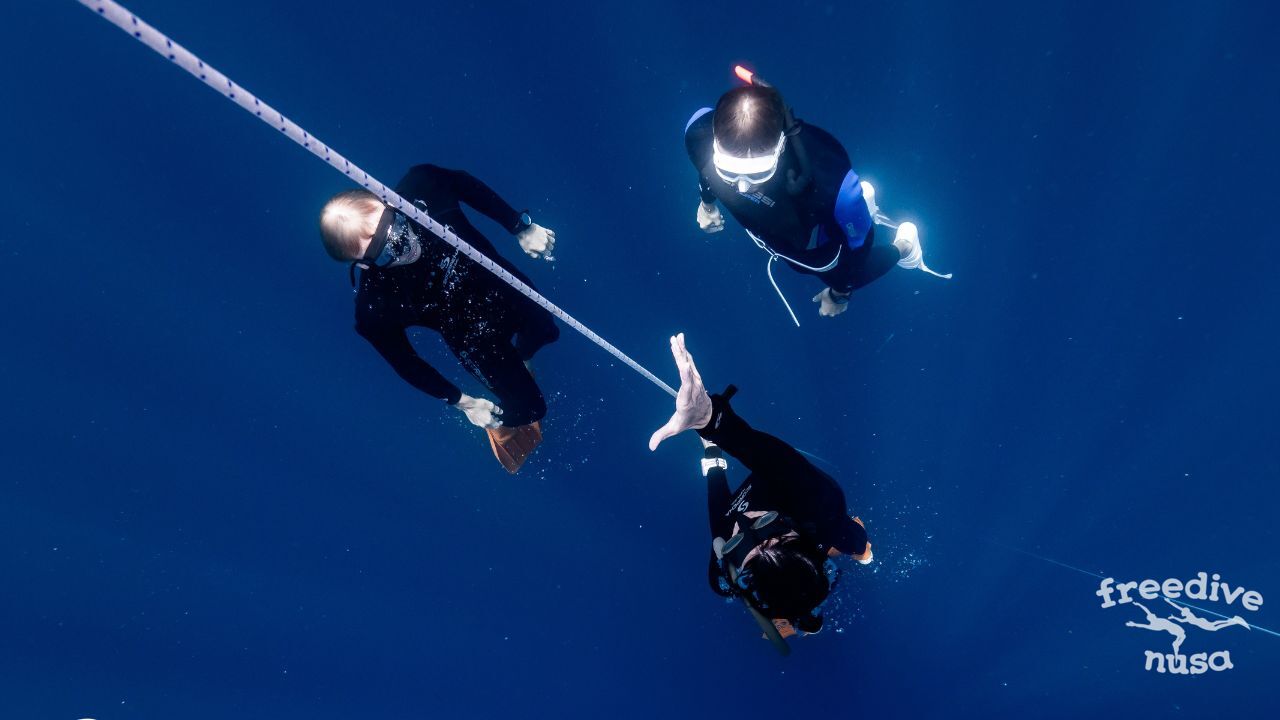
Competitive freediving means participating in events organized by one of the two governing bodies, AIDA or CMAS, where divers compete against each other to achieve the highest performance in various freediving disciplines. The objective is to reach the greatest depth, the longest distance, or the longest breath-hold time.
To succeed in competitive freediving, athletes use advanced techniques and train rigorously both in and out of the water, with a level of total commitment as a freediving athlete. In addition to their physical in-water training, competitive freedivers also engage in cross-training, mental training, and proper nutrition.
With no known limit to the physical capabilities of the human body, freedivers continually push the boundaries, diving deeper and staying underwater for longer periods of time.
The competitions are divided into pool and open water depth categories and there are 10 of the most popular and well-known freediving disciplines.
Static Apnea (STA)
In Static Apnea, freedivers stay on the surface of a pool without weights and remain still while holding their breath for an extended period. Unlike other freediving disciplines that measure depth or distance, STA is measured solely by the duration of the breath-hold.
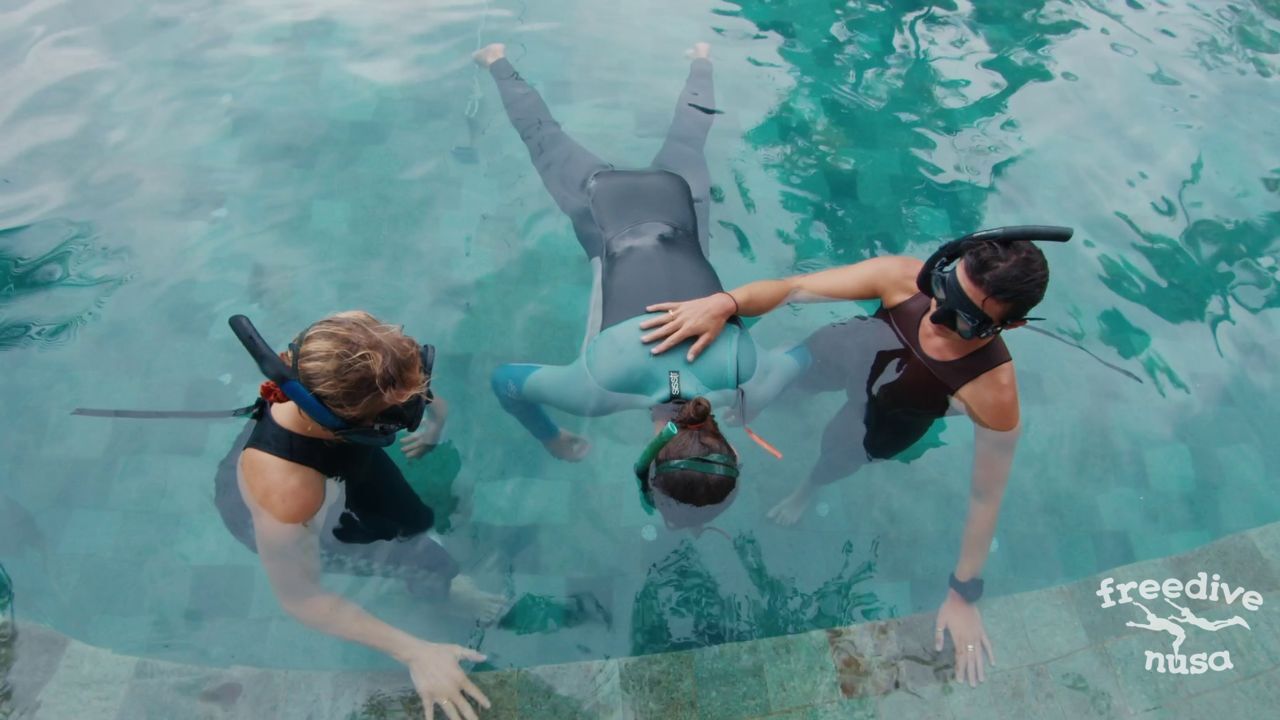
Dynamic With Fins/Bifins (DYN/DYNB)
This discipline takes place in a pool, where divers swim horizontally underwater for a distance on a single breath. They can choose to use either a monofin for DYN or bifins for DYNB.
Dynamic No-Fins (DNF)
In this discipline, freedivers perform underwater horizontal dives for a distance in a pool without using any fins. They rely only on their arm strokes and frog kicks while holding their breath to propel themselves through the water. This discipline requires a high level of physical fitness and technique as the divers must efficiently move through the water without the aid of fins, which can make it more challenging.
Free Immersion (FIM)
In this freediving discipline, no fins are worn and the diver descends and ascends along a vertical line in open water. To achieve this, the freediver uses their arms to pull themselves down and up the line.
Constant Weight with Fins/Bifins (CWT/CWTB)
In this discipline, divers attempt to reach a target depth on a vertical line in open water wearing a minimal amount of weight, which will remain with them for the entire dive, and propel themselves downwards using either a monofin for CWT or bi-fins for CWTB.
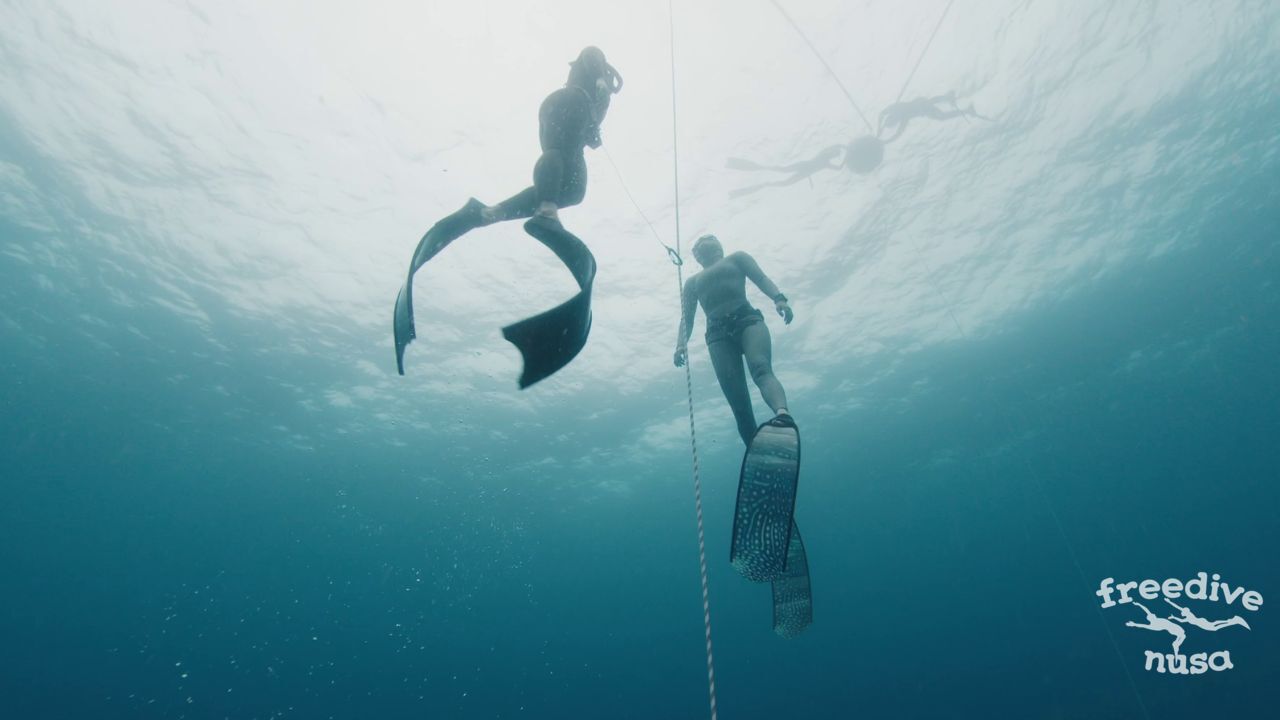
Constant Weight No-Fins (CNF)
In Constant Weight No-Fins, freedivers dive in open water wearing only a minimal amount of weight and swim down to reach a target depth on a vertical line using only their arms and legs, without the aid of fins. All of this is accomplished on a single breath, requiring a high level of physical and mental preparation.
Variable Weight (VWT)
Variable Weight is a freediving discipline where divers aim to reach a target depth on a vertical line without wearing any weights. Instead, they use a heavyweight (sled) to descend to the end of the line, leave it at depth, and ascend either by finning or pulling on the line. While it is no longer a competitive discipline, some advanced freedivers may use it for training, while others may enjoy it for recreational purposes.
No-Limits (NLT)
No-Limits is a freediving discipline performed in open water, in which divers descend to great depths using a heavyweight (sled). Once they reach the target depth, they release the weight and ascend using a propulsion device such as a gas-filled balloon. No-Limits is no longer a competitive discipline.

Benefits of Freediving
Mental Benefits
Freediving is often used as a way to relieve stress. Relaxation is a crucial aspect of freediving, and many freedivers learn various relaxation and meditation techniques. To achieve their individual goals, whether it be depth, distance, equalization, or simply relaxation, freedivers must also learn how to maintain focus, manage stress, and be more present. The skills and techniques learned in freediving can often transfer to one’s everyday life on land, leading to a more fulfilling and peaceful existence.
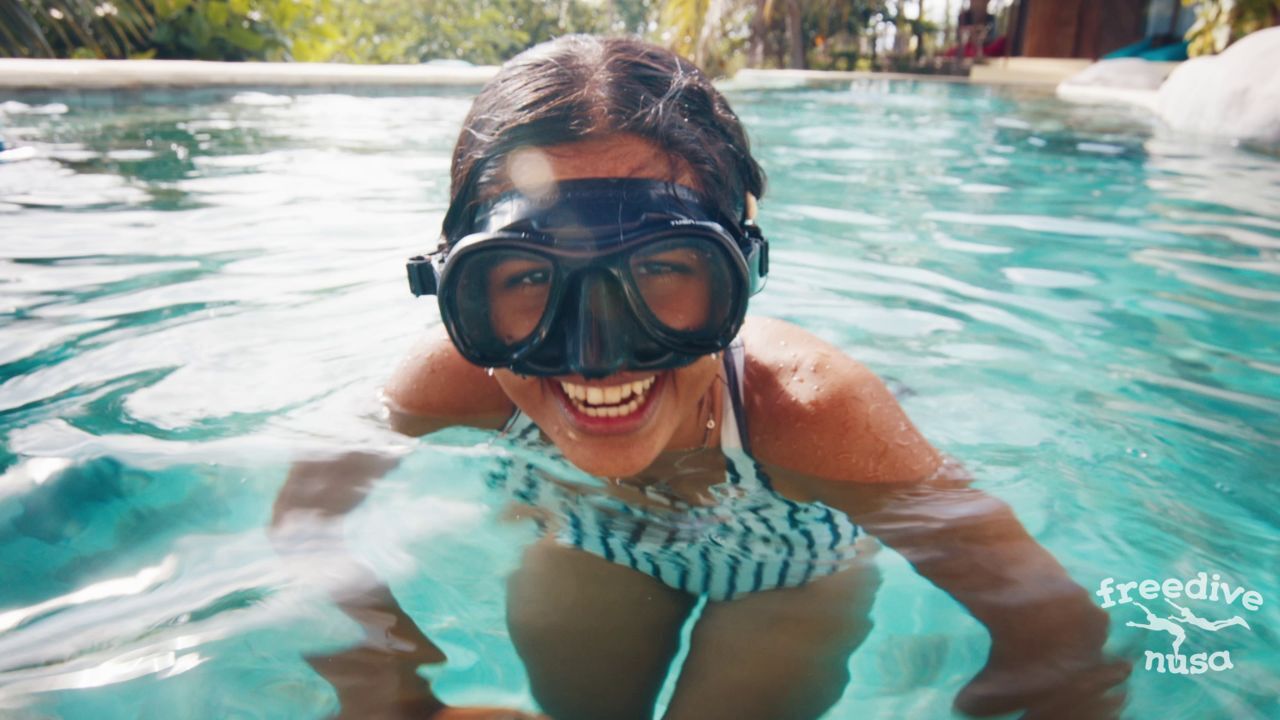
Physical Benefits
Freediving, being a water sport, requires no heavy equipment as scuba diving does and it makes freediving joint-friendly and conducive to increasing the range of their motion.
Additionally, the constant effort to fill the lungs to maximum capacity during freediving can lead to increased lung function, capacity, and strength. The development of efficient and healthy breathing techniques can become a valuable skill in everyday life.
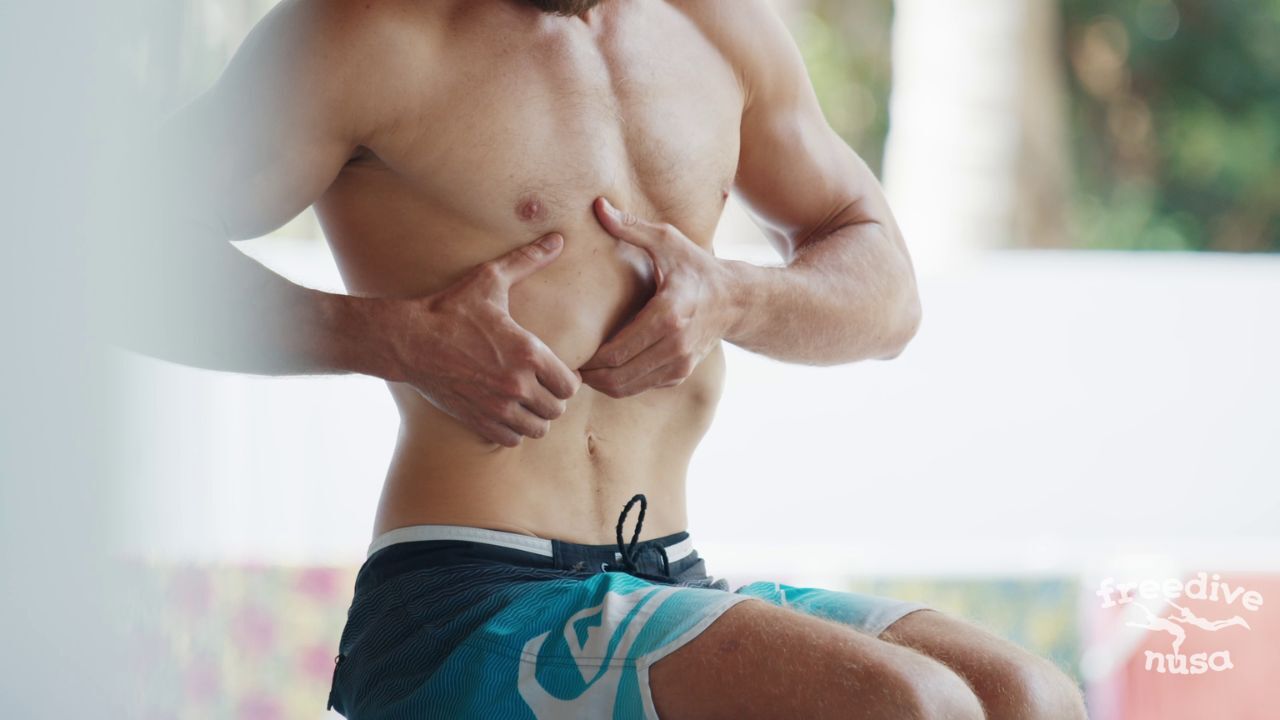
Freedivers who pursue deeper dives also focus on enhancing rib cage and diaphragm flexibility to avoid injuries caused by pressure changes at depth. Many freedivers incorporate yoga into their training to improve overall flexibility.
Overall Fitness
Freediving involves various physical activities such as swimming to a dive location, providing safety to fellow divers, performing dives, and setting depth lines. All of these activities require a significant amount of muscle activation, and lower-body strength, along with additional resistance from the water. Hence, freedivers often practice out-of-water exercises such as weight lifting, running, yoga, or any other cardiovascular activity to improve their overall strength and fitness.
Exploration
Freediving offers a unique way to intimately explore the ocean. Unlike in scuba diving, freedivers can be fast in their moves and they are free to follow sea creatures wherever they go, in any direction they please, for as long as freedivers can hold their breath.
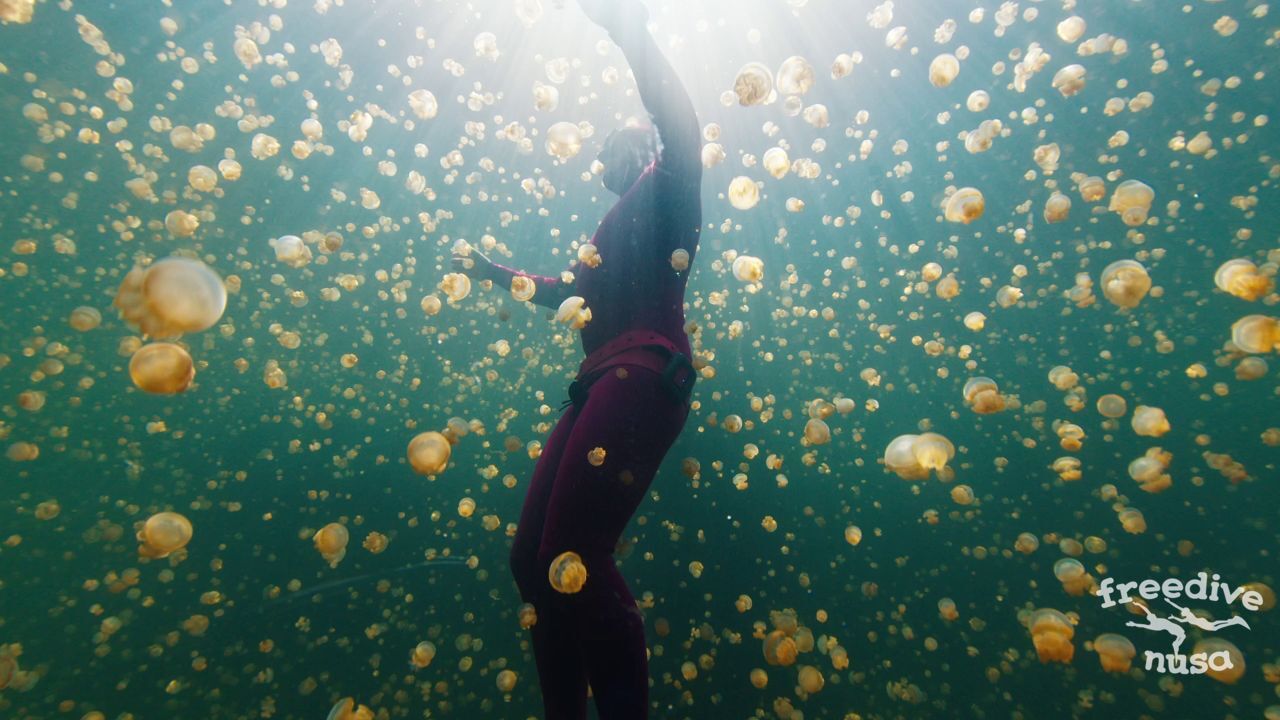
Moreover, freediving is not just an activity for exploring the ocean; it is also an activity that allows individuals to explore themselves. Freedivers constantly challenge themselves mentally and embark on a journey into their mind with each dive. Self-awareness is an important aspect of the sport, and it is common for people to use freediving as a form of meditation to help them become more present at the moment and more connected with their thoughts and feelings.
Confidence in Water
When it comes to freediving, safety is always a top priority. Training programs place a significant emphasis on teaching freedivers how to stay safe while exploring the underwater world. Students learn how to recognize potential hazards and how to react in case of an emergency. Through the courses, freedivers become more aware of their surroundings and know how to help others who may be in distress. Improved water confidence and rescue skills are invaluable, not just in freediving, but in everyday life as well.
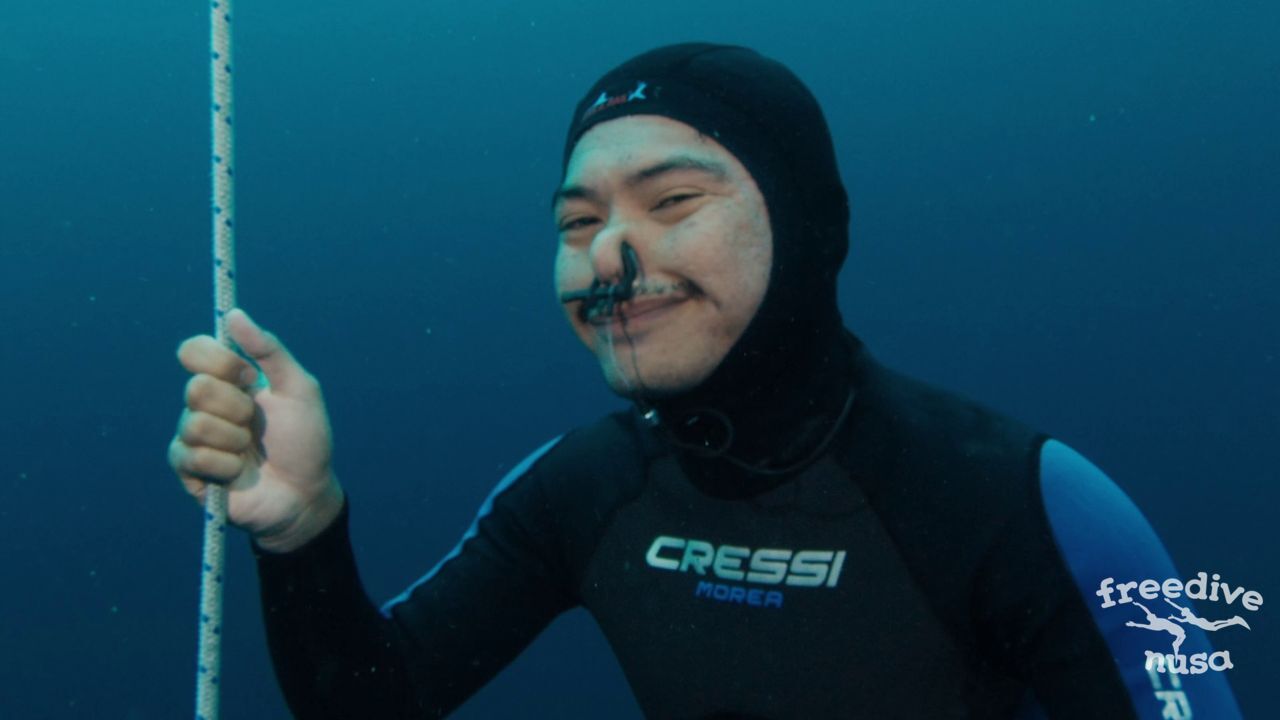
Lifestyle
Those who are serious about freediving as a lifestyle may find themselves making some important changes. They may choose to cut back or even quit smoking, reduce their alcohol consumption, adjust their diet, take up meditation, or engage in cross-training through yoga or other activities. Additionally, many freedivers become more mindful of environmental issues and may develop an interest in ocean conservation, since they come to appreciate the importance of oceans to the planet. Embracing freediving will lead to a variety of positive lifestyle changes.
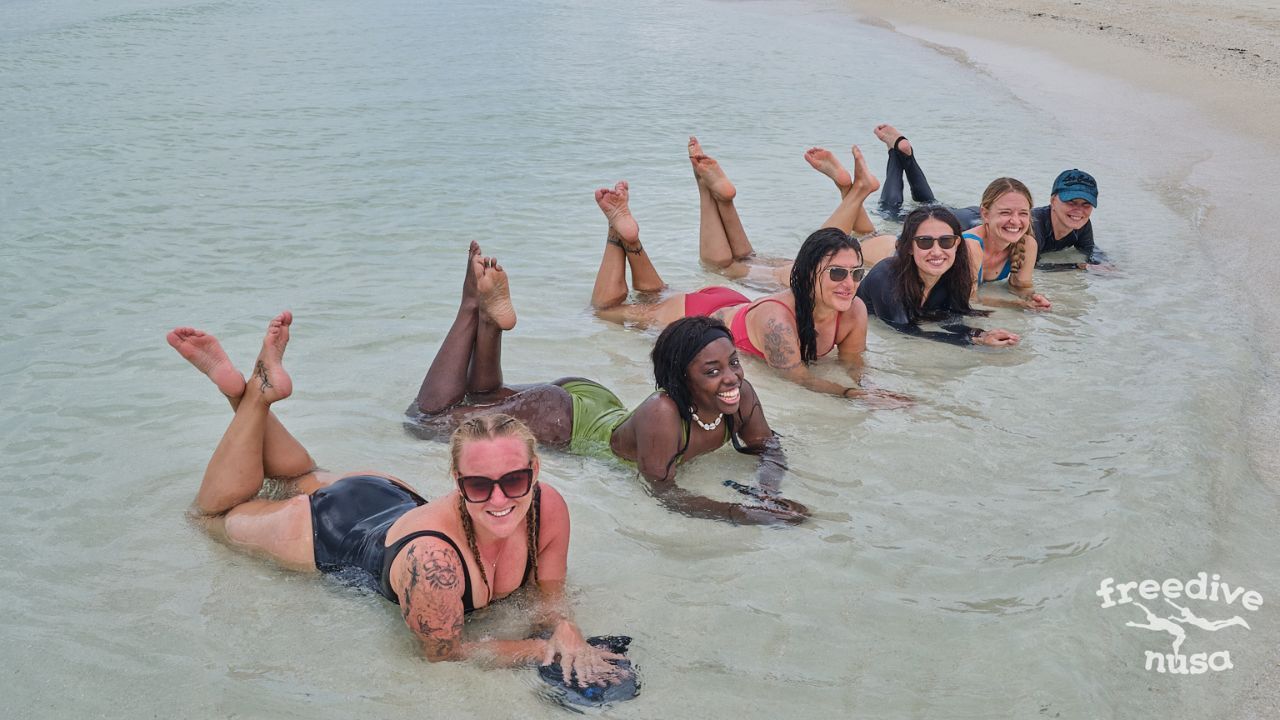
FAQ
What’s the difference between snorkeling and freediving?
Despite using the same equipment, freediving and snorkeling are two different activities. Snorkeling involves remaining at the surface of the water while wearing a mask and breathing through a snorkel, allowing the snorkeler to observe the underwater world from above. Freediving, on the other hand, requires divers to hold their breath and dive deep beneath the surface, with the use of a snorkel only being necessary when they return to the surface for air. As such, freedivers typically remove their snorkel before diving to avoid any entanglements or other risks associated with using equipment at deeper depths.
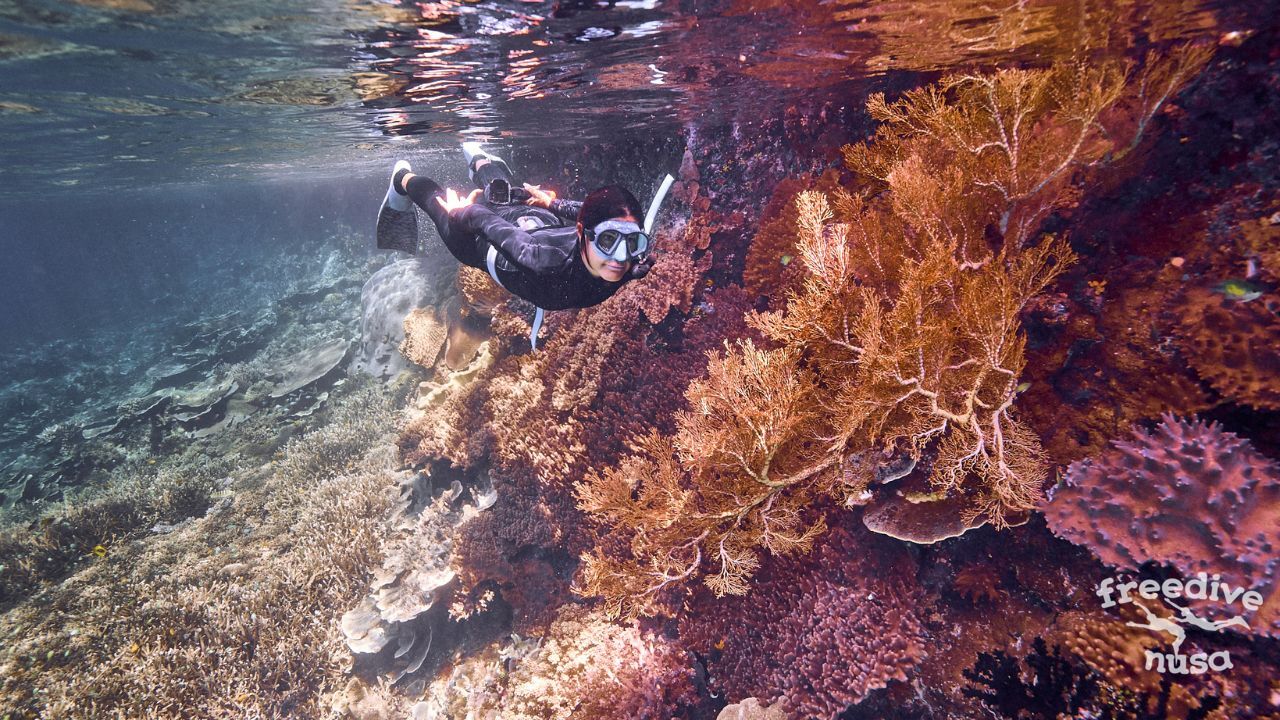
Can I freedive?
Anyone who can swim on their own and has good health and fitness can participate in freediving. Before enrolling on a course, we recommend you consult a medical professional if you are unsure about your ability to participate.
Does not being able to hold your breath for a long time mean that you can not freedive?
Many people believe that they can’t freedive because they cannot hold their breath for very long. However, this is a common misunderstanding. Through proper training, you can learn breath-hold techniques that may pleasantly surprise you with how long you can hold your breath.
Where can I learn freediving?
Freediving education is accessible worldwide, whether you live near the sea or not. You can start learning the theory from the manuals and dry train from home with online courses and certifications. You can also get pool certification to train static and dynamic disciplines. If you don’t have access to the sea, there are many vacation spots in different countries where you can do open water sessions or a full course. However, it’s important to remember that online resources are not a substitute for proper freediving training with a certified instructor. Freediving can be safe, but it comes with risks that can only be mitigated with the proper knowledge and training.
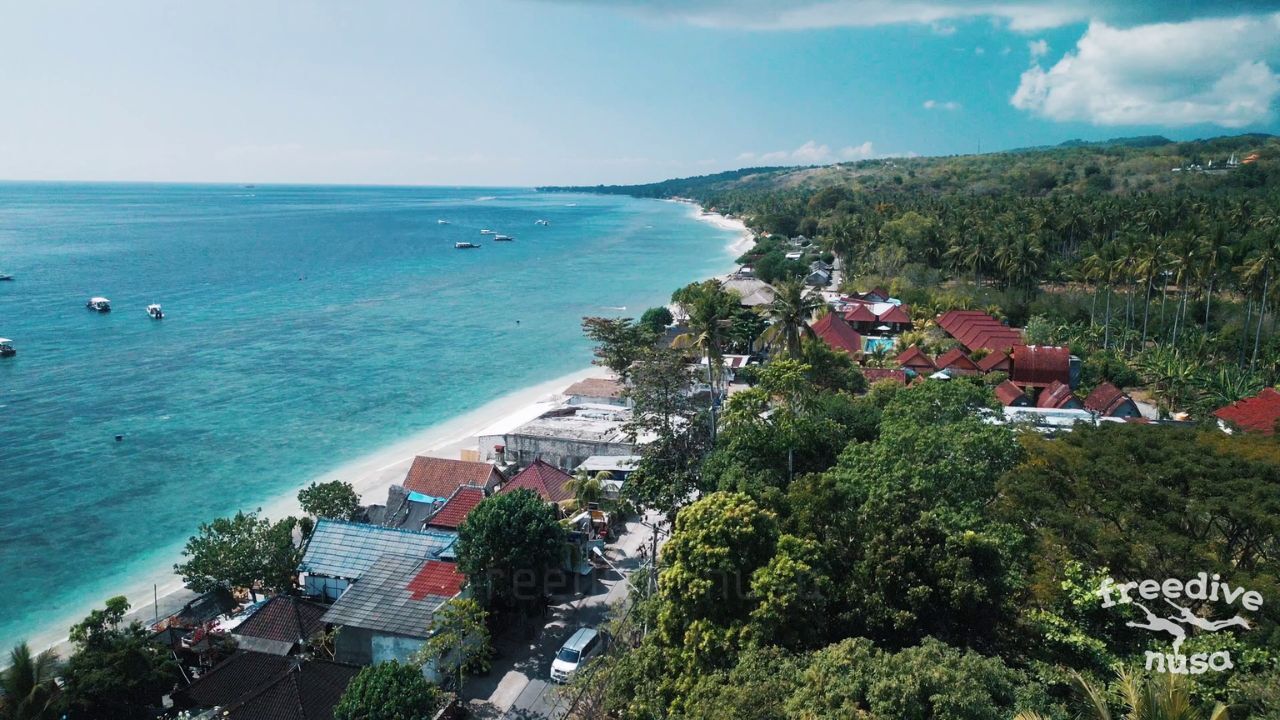
About our school
In Freedive Nusa we have a team of certified instructors that provides comprehensive courses that cater to all levels of freedivers, from beginners to master programs and individual coaching. By taking a freediving course, you will learn valuable skills that will help you to dive deeper and longer safely and confidently.
We offer education and training in the Molchanovs and SSI education systems. When you complete the course, you will receive a certificate from the respective recognized agency and can continue your education in any other freediving school around the world.
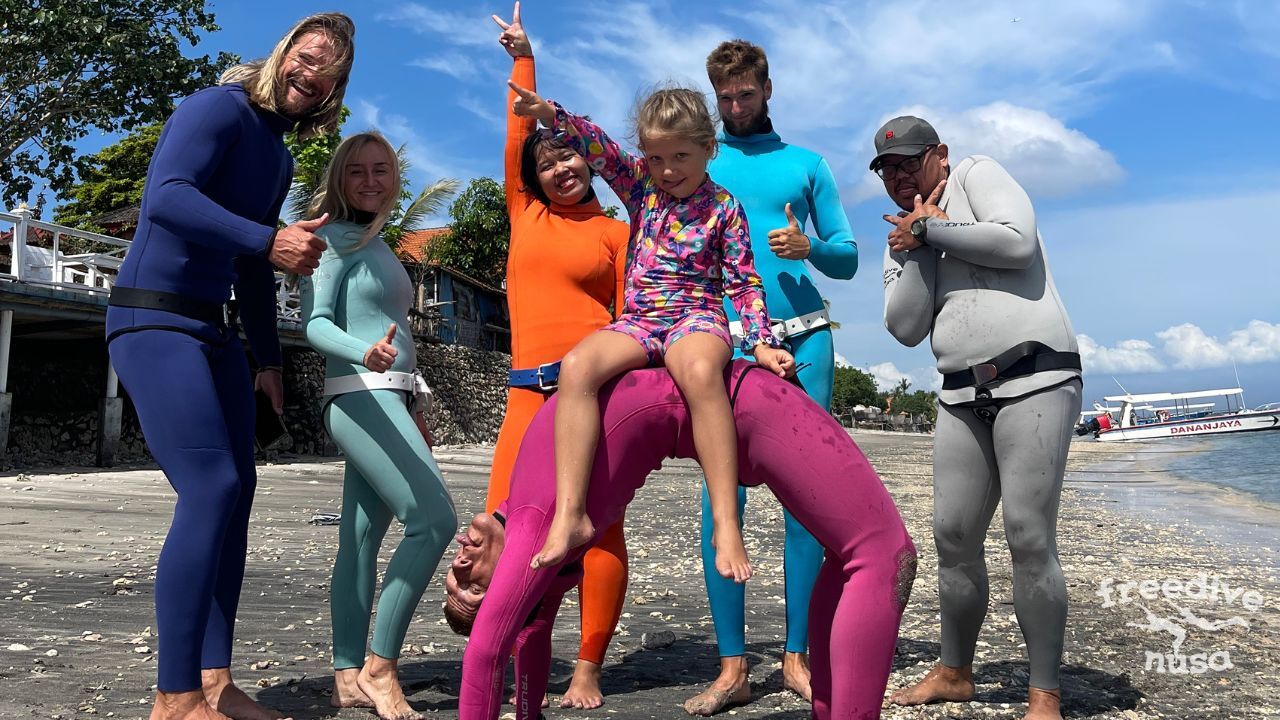
Molchanovs Education System
The system was originally created by Natalia Molchanova, a world champion freediver who held an incredible 42 world records. In 2018, the Molchanovs education system was officially launched, building on Natalia’s initial system and incorporating the knowledge of some of the world’s most successful freedivers, including Alexey Molchanov and experienced freediving trainers.
 Molchanovs Education System is one of the fastest-growing freediving agencies in the world. It has created an online community of freedivers who have all taken a Molchanovs freediving course. Through this platform, freedivers from around the world can share their ideas, discuss training techniques, improve their skills, take challenges, join training programs, and get support whenever they need it.
Molchanovs Education System is one of the fastest-growing freediving agencies in the world. It has created an online community of freedivers who have all taken a Molchanovs freediving course. Through this platform, freedivers from around the world can share their ideas, discuss training techniques, improve their skills, take challenges, join training programs, and get support whenever they need it.
The certification program consists of multiple levels, each focusing on different aspects of freediving, such as theory, safety, and practical skills. By completing the Molchanovs freediving course, you can achieve a recognized certification that is accepted globally, demonstrating your proficiency in freediving to others. Additionally, the certification can open up new opportunities for you, such as going up the career ladder and becoming a freediving instructor.
SSI Education System
SSI stands for Scuba Schools International, which is a globally recognized training agency for scuba diving and freediving. It was founded in 1970 and has since then been providing quality education and training to divers and freedivers all over the world.
 The SSI Freediving Program is designed to provide students with the knowledge and skills necessary to safely and confidently participate in freediving activities. The program is divided into multiple levels, starting from Basic Freediving and progressing all the way up to instructor training courses. Each level has specific objectives and performance requirements, allowing students to gradually build their skills and experience.
The SSI Freediving Program is designed to provide students with the knowledge and skills necessary to safely and confidently participate in freediving activities. The program is divided into multiple levels, starting from Basic Freediving and progressing all the way up to instructor training courses. Each level has specific objectives and performance requirements, allowing students to gradually build their skills and experience.
At the end of each course, students can achieve certification which is recognized worldwide. The certification demonstrates that the student has successfully completed the course and met the performance requirements. SSI certification also allows students to continue their freediving education at any SSI center worldwide.
Never Freedive Alone
For all freediving activities, it’s essential to provide safety to the person that freedives underwater as a buddy. Buddy safety and rescue training is an essential part of every freediving course.

We highly recommend giving freediving a try to discover the incredible underwater world and unlock your potential.
See you in the blue!
